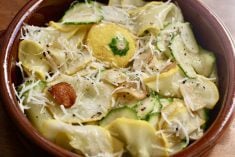Thanks to everyone who forwarded copies of Mary Moore’s recipes for lemon squares, as requested by E.I., Gerald, Sask.
Also thanks to I.C., Moose Jaw, Sask., for sending us a copy of The Mary Moore Cookbook, along with newspaper clippings about Moore’s work and death.
These clippings tell of the popularity of her food column, which explains why many of you saved her recipes.
Her writing started in 1928 with a freelance column in the Edmonton Journal where she was asked to submit food stories to accompany a St. Patrick’s Day supplement. It continued until her death 50 years later. At the peak of her career she wrote a weekly food column for 22 daily newspapers, including the Regina Leader Post.
Read Also

Farm auctions evolve with the times
Times have changed. The number of live, on-farm auctions is seeing a drastic decline in recent years. Today’s younger farmers may actually never experience going to one.
In l978 Moore found time to put her recipes into a book to commemorate her 50 years of newspaper work. There was an overwhelming response to her cookbook.
“Her modesty led her to underestimate that it would be a best seller,” wrote a Leader Post writer on June 3, 1978.
“The first 5,000 copies she first had printed were spoken for in a matter of days. Many thousands of orders poured in before publication. Because of the response, the promptness with which she intended the cookbooks to be mailed to her readers will not be possible.”
She planned to do the mailing herself, with the help of a secretary. However, she died in Hamilton, Ont., on May 22, l978 of a stroke at the age of 75.
Her daughter and son, with an expanded staff, filled the orders. She never retired and her last columns reached the newspapers after her death and were printed until June 30 of that year.
Her cookbook features two recipes for lemon squares that differ in taste, ingredients and method.
Lemon squares
Base:
2 cups unsifted 500 mL
all-purpose flour
1Ú2 cup unsifted icing sugar 125 mL
1Ú2 teaspoon salt 2 mL
1 cup butter or margarine 250 mL
(room temperature)
Filling:
4 large eggs 4
13Ú4 cups granulated sugar 425 mL
1Ú3 cup lemon juice 75 mL
1Ú3 cup all-purpose flour 75 mL
1Ú2 tsp. baking powder 2 mL
To make the base, stir together flour, icing sugar and salt. Cream in margarine until mixture blends into a pliable dough that looks like shortbread. Pat evenly by hand into the bottom of a buttered 9 x 13 inch (22 x 33 cm) pan. Bake at 350 F (180 C) for 11 minutes.
Meanwhile, prepare filling by beating together all filling ingredients until smooth, scraping down sides of bowl once or twice. Mix well. Pour over hot base. Return to oven immediately and bake at 350 F (180 C) about 25 minutes, until pale gold.
During last five minutes put cookie sheet below baking pan to be sure bottom does not burn. Remove from oven and let cool in pan on cake rack. Cut into squares.
Store in tightly covered container.
Quick lemon squares
Pie fillings today are different than in the 1970s. Many have the sugar already added. I have changed the filling part of the recipe for this reason. I found this square a bit crumbly, so it is best served on a plate.
Filling:
1 lemon pie filling, 1
pie size
Crumb mixture:
13Ú4 cups fine soda 425 mL
cracker crumbs
1Ú2 cup brown sugar 125 mL
3Ú4 cup all-purpose flour 175 mL
11Ú2 cups coconut 375 mL
(desiccated, strip or flake)
1 cup margarine or butter 250 mL
Make filling as directed on the package. Cool, stirring once or twice.
Meanwhile, mix together all crumb ingredients using pastry blender or your fingertips. Pat 2Ú3 of mixture into a 9 x 13 inch (22 x 33 cm) ungreased pan and smoothen. Cover evenly with cold lemon filling. Sprinkle all remaining crumbs over top to cover. Pat them down gently.
Bake at 350 F (180 C) about 20 to 25 minutes or until tinged with gold top and bottom. Chill before cutting into squares.
Mother’s recipes
Dear TEAM: Recently a neighbor gave me a grocery bag full of Western Producers. We’re both old farmers at heart.
In your column there was a request for green tomato conserve. The recipe given to her reminded me of my mother’s, also from the 1930s. My mother called hers green tomato mincemeat. We had apple and crabapple trees, so it was always made with apples. The recipe made a large quantity, but that was no problem because it was so delicious, it disappeared fast. – P. S., Rosetown, Sask.
Thanks P. S. for your recipe. It is apple and tomato season, so some of you might like to make this mincemeat. In the 1930s, a large-quantity recipe was important to fill the appetites of growing and hungry families. We now have many more food choices and probably a small batch would be more to our liking. Therefore, I have changed this recipe into a smaller size, to meet today’s needs. The recipe sent in by P.S. used two gallons of tomatoes and two gallons of apples.
Green tomato mincemeat
8 cups chopped green 2 L
tomatoes
8 cups chopped apples 2 L
3 cups packed brown sugar 750 mL
11Ú2 cups each of currants 375 mL
and seedless raisins
1Ú2 tsp. each of cinnamon, 2 mL
cloves and allspice
Clean tomatoes well. Put through a chopper or food processor. Sprinkle with two tablespoons (30 mL) coarse salt. Let stand one hour or longer. Pare apples and chop. Drain tomatoes well. Put all together and let simmer one hour. Pack in sterilized jars. Seal at once. Yield: 10 cups.
- It is now recommended that after filling the jars, they be processed in a hot water canner. From looking at other recipes, I would estimate the processing time for mincemeat at 20 minutes for pints and half pints, and 25 minutes for quarts.
- A tablespoon (15 mL) of beef suet may be added in each pie before baking.
- P.S. says that it is delicious with bread and butter or as a sandwich filling.
Something to think about
If we could shrink the Earth’s population to a village of 100 people, with all existing human ratios remaining the same, it would look like this:
- There would be 57 Asians, 21 Europeans, 14 from the western hemisphere and eight Africans.
- Half of the village’s wealth would be in the hands of six people and all six would be Americans.
- 80 would live in substandard
housing.
- 70 would be unable to read.
- One would be near death.
- One would be near birth.
* 50 would
- 50 would
suffer from malnutrition.
- Only one would have a college education.
- No one would own a computer.
Source: Saskatchewan Women’s Institute May 1999 Brown Envelope.
Connect with kindness
If you connect with kindness during National Family Week, let Family Service Canada know what you did and your name will be entered in a draw.
National Family Week is observed the week before Thanksgiving, Oct. 4-10, giving Canadians the chance to honor their own families.
During this week, Canadians are challenged to perform a random act of kindness and to register it with Family Service Canada. Tell them what you did, how it was received and how you felt doing it. Mail it to: Family Service Canada, 404-383 Parkdale Ave., Ottawa, Ont. K1Y 4R4. Fax: 613-722-8610, e-mail: fsc@igs.net.
The phone number is 613-722-9006 and website: www.cfc-efc.ca/fsc/.
What can you do to make a connection with someone? The connection doesn’t have to be elaborate. Here are some examples.
- Make a surprise batch of cookies for your children, grandchildren or neighbor.
- Get down on the floor and play with a child.
- Make a video for a relative or friend.
- Organize a family get-together.
- Visit a seniors’ residence.
- Leave a special message under someone’s pillow.
Reader’s requests
Dear TEAM: I am wondering if you or any of your readers can help me find a Five Roses cookbook, from the 1930s. Where can I write to get this cookbook?
I also would like to know where I could get the bulbs for golden garlic (allium moly). Also where could I get an apple-scented geranium? – A. F., Wolseley, Sask.
Dear A.F.: Hopefully someone has a 1930s Five Roses Cookbook they no longer use. We will keep an eye out for one at flea markets.
Dutch Growers in Saskatoon is one greenhouse that sells golden garlic. They also knew of the apple-scented geraniums so may have them available at times. If the greenhouses near you do not have these items, contact Dutch Growers, 306-249-1222 or by writing 685 Reid Rd., Saskatoon S7N 3J4.
You might be interested in becoming a member of Seeds of Diversity Canada. It is an organization made up of gardeners that grow old varieties or heritage seeds, who share seeds with others. You may also list seeds you have available by the deadline of Oct. 15. That list then becomes a valuable resource for old seed varieties. The cut-off date for ordering was June 1. In Canada, Seeds of Diversity includes vegetables, flowers and herbs.
For more information or to become a member write to Seeds of Diversity Canada, Box 36, Station Q, Toronto, Ont. M4T 2L7. Membership fee is $25. For an additional $8 you can order information on how to save your own seeds.














